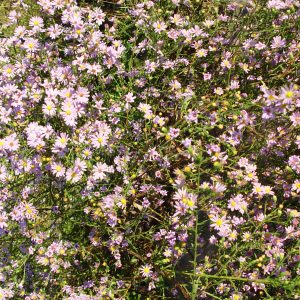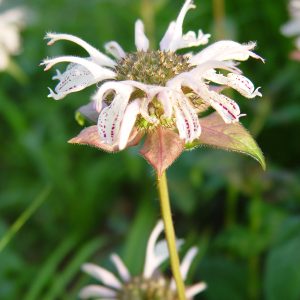Prairie Cinquefoil
Drymocallis arguta (formerly Potentilla arguta)
Flowers have special ultraviolet reflecting patterns that are visible to most pollinators
$3.00 – $91.00
For quantity discount pricing, request a quote.
Description
Drymocallis arguta, commonly known as Prairie Cinquefoil, is a native perennial forb (wildflower). The entire plant appears light or whitish green. When ultra-blue light is made visible through a special filter, patterns are revealed that are only perceptible to pollinating insects. These ultra-violet reflecting patterns help the flowers stand out from the background and may function as nectar guides. Thus, the flowers are colored a combination of either white or yellow.
Wildlife notes
Prairie Cinquefoil flowers attract small bees and flies. The larvae of some small insects form galls or mine the leaves of cinquefoils. Other insect feeders include Acyrthosiphon spp. and other aphids, Northern Grasshopper (Melanoplus borealis), and Bruner’s Grasshopper (Melanoplus bruneri). White-tailed Deer and probably other mammalian herbivores browse on the foliage of these plants occasionally – the seeds of cinquefoils often pass through their digestive tracts and remain viable. Thus, such mammalian herbivores help to spread these plants to new locations. The seeds of cinquefoils are eaten in small amounts by the Deer Mouse and possibly other small rodents.
Forage notes
No information is currently available. Please let us know if you have personal experience with this species.
Landscaping notes
This plant prefers full sun and mesic to dry conditions. This plant is not particular about soil type, as long as the site is well-drained. In native habitats, it’s often found in soil that contains some clay, rocky material, or sand. Drought tolerance is excellent, and foliar disease is rarely observed. This plant is easy to grow if the above requirements are met.
Restoration notes
Habitats include mesic to dry black soil prairies, clay prairies, sand prairies, gravel prairies, hill prairies, Black Oak savannas, and abandoned pastures. Unlike some of its weedy relatives, this plant is normally found in high quality habitats, rather than disturbed areas.
Additional information
| Weight | N/A |
|---|---|
| Unit | Packet, Ounce, Pound |
| Light | Full Sun |
| Seeding Rate | 2 bulk lbs/acre |
| Soils | Dry, Average |
| Height | 24"-36" |
| Bloom Month | May, Jun, Jul |
| Color | Gold-Brown |
| Specialty Uses | Wildlife, Medicinal |
| # seeds/pkt | 200 |
| Packet coverage area | 5 sq. ft |
| Life Cycle | Perennial |


